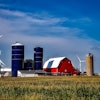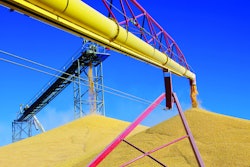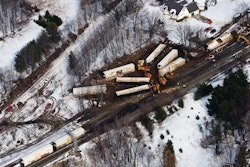In working with clients in confined space matters over the past 25 years, a number of recurrent themes have been revealed. In view of this focus on the agricultural segment regarding confined space issues, I thought it might be helpful to summarize and share a few thoughts on occupational safety and health. The list of considerations in this article is by no means comprehensive. However, the list includes a number of important considerations as we work to improve the safety of all who work in and around agricultural confined spaces.
Approaching confined space safety as a mandate to preserve life and health
For employers and employees in the agricultural industry, when it comes to safety issues and the preservation of life and health, confined spaces can present very significant potential hazards. That is why confined space safety remains a significant enforcement area with the Occupational Safety and Health Administration. But, I believe the most critical issue confronting employers with confined spaces in their workplaces is not simply compliance with minimum regulatory standards (whether those standards are federal or state-based). Instead, the driving force for many employers behind confined space safety (as well as in other areas of safety) is the preservation of life and health through reasonable and proactive means/methods beyond mere regulatory compliance.
Confined space safety considerations
Accordingly, here are a half dozen points of consideration in the confined space safety area collected over a number of years of work in this area of occupational safety and health:
- Conditions in Confined Spaces Can and Do Change — A prior test conducted to determine whether a particular confined space contained an oxygen-deficient or hazardous atmosphere may not be representative of current or future conditions in the same or similar confined space. This is because confined space safety conditions can change due to a wide variety of circumstances: new equipment in/around the confined space; different materials used or stored within the confined space; changed temperature, wind and humidity conditions; different operations in or near the confined space (including proximity of combustion engines, other sources of hazardous atmospheres); changed nature of amount of cleaning or fumigation agents; etc. Accordingly, reliance upon past air sampling/atmospheric testing carries significant risks.
- Temperature Considerations and Confined Spaces — In the midst of the hot summer months, OSHA has been issuing warnings/cautions to employers about heat stress, heat-related illness and fatalities that can occur (and have occurred) to workers in very warm working environments. Agricultural confined spaces can often involve temperature extremes. As part of its seasonal outreach, OSHA has embarked on a formal Campaign to Prevent Heat Illness that is based on three core elements: “Water, Rest and Shade.” The Campaign reminds employers to:
- Provide plenty of safe drinking water so that workers can remain properly hydrated;
- Provide frequent breaks in cool/ shaded areas;
- Work to schedule heavier/more strenuous work for cooler parts of the workday or shift;
- Watch workers for signs of heat stress/illness;
- Train supervisors and workers to recognize the signs/symptoms of heat stress and heat-related illness;
- Ensure that workers who show such symptoms are provided immediate and proper medical attention. Delay in such help can prove to be disastrous;
- Advise workers to wear appropriate garments while working in high heat conditions such as lighter clothing; and
- Be careful about employees who are new to working in such conditions or who are returning from a period away from work (such as a vacation break) by allowing them time to adjust or having a gradual return to work in the heat.
Several of these considerations are particularly applicable to work in agricultural confined spaces.
- Cultural Diversity and Confined Space Safety — Not all workers have the same English language ability. It is vital to ensure all workers entering confined spaces have a clear understanding of the many safety requirements, procedures and equipment needed for safe entry, operations within the space and exit. For all workers, it is important to provide the same quality and extent of training in an understandable manner. As emphasized by OSHA, this means that training and safety-related materials should be provided in a language fully understood by each and every affected worker. An employer does not want to be in the position of learning, only after a safety incident, that an employee did not understand applicable confined space safety requirements.
- Youth and Confined Spaces Laws — Regulating the type and hours of work that can be performed by youth abound at the federal, state and local levels across the country. Some work cannot be lawfully performed by minors. But even where youth are prohibited by law and by their employers from performing certain work, experience has shown that some individuals may stray or go into prohibited and/ or regulated areas, including confined spaces. That is why it is essential to ensure that such youth are properly and continuously supervised. It only takes a few moments for a serious and potentially life altering incident to occur to anyone, including minors. Incidents involving minors are such that OSHA maintains special website resources devoted to safety considerations specific to youth and agricultural work. In fact, some such materials on the OSHA website search engine can be accessed by typing in the words “Youth in Agriculture.” Those OSHA materials discuss confined space safety and health issues, among other safety-related topics.
- Equipment and Operations within Confined Spaces — Space considerations in this article do not permit coverage of specifics regarding equipment and operations within confined spaces other than to observe that many OSHA standards apply to such equipment and activity. There are personal protective equipment, fall protection, operational, lockout/ tag-out and other significant safety issues that are governed by specific OSHA standards. It is essential to ensure that the entire range of applicable standards are understood and complied with in all regulated confined space operations.
- Winter Conditions — In these summer months, it seems a little ill-timed to address confined space issues in the winter, but such issues must be part of this short list of considerations because the cold months of the year present special safety concerns. Some regulated areas such as silos, bins and elevated confined spaces can present very substantial fall hazards. The risks of those hazards can be increased during winter months when snow, ice and rain (including freezing rain) conditions create dangerous footing and slipping risks. Many serious injuries and deaths have resulted from such conditions and, in some cases, the best prevention against such risks is to simply schedule work (if at all possible) for times when these conditions are not present.
Defaulting toward safety
In conclusion, one general principle that has guided some employers in uncertain situations is to always default toward the safer option. With respect to confined space safety and health, this is a very good approach to consider because we can always change our future plans and operations toward a safer course, but we cannot turn back the clock once an incident has occurred.




















